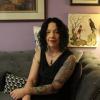publish.me: Get to Know the Nielson Bookscan

In the world of TV, we’ve often heard about Nielsen ratings. But it’s rare for readers to realize there’s an arm of the same company that focuses on book sales, otherwise known as Nielsen BookScan. The goal was for a comprehensive database reflecting quantity of each title of a book sold.
There’s a lot of moving pieces that have to come together beforehand. Every book sold needs an ISBN, otherwise referred to an International Standard Book Number. This is essentially the individual code associated with each book, very much like one’s social security number.
This also requires participation from the entities that sell and distribute books. From your local bookstore, to Amazon, to less traditional outlets, the hope is that every book sold will be reported to Nielsen BookScan. Therefore, it requires the stores who participate to have compatible operating systems. The resulting total would reflect the number of book sales after subtracting any book returns.
Here are the bookstores in Minnesota that currently participate:
-
Beagle and Wolf Books & Bindery (Park Rapids, MN)
-
Cherry Street Books (Alexandria, MN)
-
Christos Bookcenter (Rochester, MN)
-
Content (Northfield, MN)
-
Drury Lane Books (Grand Marais, MN)
-
Inspirations Christian Bookstore (Grand Rapids, MN)
-
Living Word Christian Center (Brooklyn Park, MN)
-
Magers & Quinn (Minneapolis, MN)
-
Micawber's (St. Paul, MN)
-
Milkweed Books (Minneapolis, MN)
-
Moon Palace Books (Minneapolis, MN)
-
Owl Books & Brew (Osakis, MN)
-
Red Balloon Bookshop (St. Paul, MN)
-
SubText: A Bookstore (St. Paul, MN)
-
Turtle Town Books & Gifts (MN)
-
Uncle Edgar's Mystery Bookstore (Minneapolis, MN)
-
Uncle Hugo's Science Fiction Bookstore (Minneapolis, MN)
-
The Valley BookSeller (Stillwater, MN)
-
Village Bookstore (Grand Rapids, MN)
-
Wild Rumpus (Minneapolis, MN)
-
Zenith Bookstore (Duluth, MN)
It’s worth checking out the current list of everyone that is participating in BookScan.
So why does this matter?
When a book is considered by a publisher, there’s a good chance they’ll consult BookScan for the sales numbers. Unfortunately, it only reflects approximately 85% of the sales numbers.
For any author previously published, it’s important that editors see the accurate sales for their books; for a debut author, editors will consult sales that are similar in scope. Hence when an author is told the market is flooded, or that their book may not sell through in the current market, there’s a good chance BookScan played a role during the consideration process.
How does one manage this reality in today’s publishing climate?
First and foremost, write the best book you can. Repeat that process. If your writing is strong, there’s a good chance an editor will take the time to consider offering to publish your book. Good writing can go far when placed in front of an editor who, “gets it,” and can sometimes help overcome the figurative BookScan barrier.
For previously published authors, it’s important to retain your most recent publishing statement(s). Generally these are issued every 6 months, quarterly, or monthly (depending on the publishing house). It’s important to have these statements, as the BookScan numbers will generally show a lower number. Presenting an accurate number may make a difference if your book is being presented to an editorial board.
For new authors, know your competition. If you don’t have a full grasp of the titles in your book’s category, it’s important to do the necessary research. Since I love examples, here’s a common one: baby name books.
I receive quite a few queries every year about baby name books. A quick Google search will show many baby name books previously published, both traditionally and independently, including some big hitters. A BookScan search would show all of those baby name books with ISBNs, most likely with the big hitters having significant sales numbers. Unless the author has a significant platform, this would confirm to any editor or agent that the market is flooded and the new baby name book would probably have low sales.
Lastly, in a previous post, I noted the need to use actual outlets, versus selling books out of one’s trunk at events. In the bigger picture, trunk sales will not apply to actual sales numbers. The goal for anyone hoping to write more than one book is to work with bookstores. Taking the time to save those publishing statements, and spend some quality time in your book’s category will also assist along the way.
BookScan or not, it’s important to give the necessary diligence. If you piggyback on each of your writing successes and keep building your audience, you should be on a strong track to the published life.
Dawn Michelle Frederick is the owner and literary agent of Red Sofa Literary, established in 2008. Red Sofa Literary is a celebration of the quirky, eclectic ideas in our publishing community. Dawn’s previous experience reflects a broad knowledge of the book business, with over a decade of experience as a bookseller in the independent, chain, and specialty stores, an editor for a YA publisher, and an associate literary agent at Sebastian Literary Agency. Dawn earned a BS in Human Ecology and a MS in Library & Information Sciences from an ALA-accredited institution. She is also one of the founders of the MN Publishing Tweet Up, which brings writers and publishers together over a monthly happy hour. Red Sofa Literary was voted as one of the Best 101 Websites by Writer’s Digest in 2012 and 2013.
